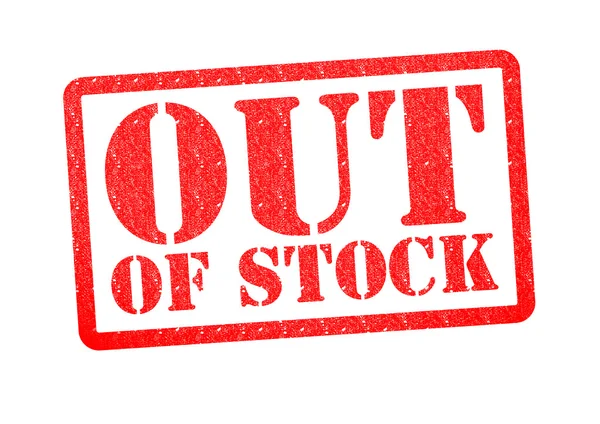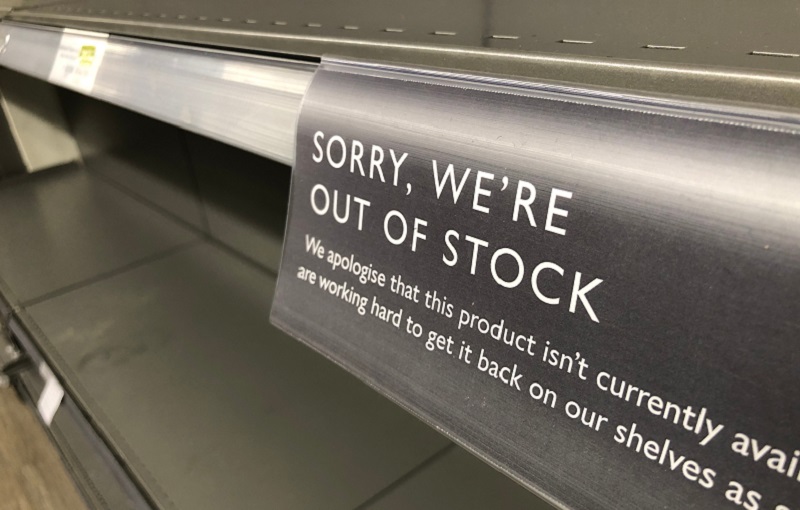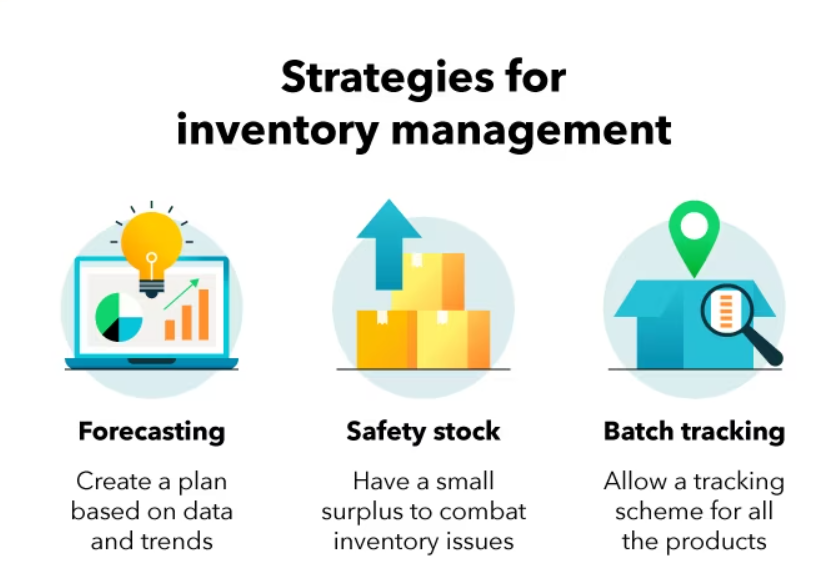Maintaining optimal stock availability is critical to successful digital shelf inventory management for any business. Whether you’re a retail store, an ecommerce platform, or a manufacturer, ensuring you have the right products in stock when your customers need them can significantly impact your bottom line. This blog will explore the importance of stock availability and its challenges and practical tips to improve.
Why is stock availability critical?
The foundation of effective stock management lies in understanding and predicting customer demand. It directly impacts revenue, costs, and customer satisfaction. Let’s delve into the reasons why stock availability matters:
Customer satisfaction: Finding their desired products out of stock can lead the customers to turn to your competitors, leading to loss of sales and potential long-term customer relationships.
Revenue and profitability: Product out-of-stock can significantly impact your profits. Each missed sale represents lost revenue and profit potential.
Brand reputation: Stock availability issues can tarnish your brand reputation. It is easy for negative reviews and word-of-mouth to spread quickly, discouraging future customers from choosing your brand or products.
Operational efficiency: Maintaining optimal stock levels allows for smoother operations. With the right stock, you can fulfill orders promptly, reduce cancellations, and minimize fulfillment delays.
Common challenges in ensuring stock availability
Maintaining optimal stock availability is a complex task that demands careful planning, strategic insights, and technological prowess. Here are the standard stock availability challenges. Let’s explore how your brand can navigate these obstacles.
Out-of-stock due to forecasting errors
One of the biggest frustrations for businesses and customers is encountering an out-of-stock product. This challenge can arise due to supplier delays, where supply chain disruptions, production delays, or unexpected events impact the timely delivery of goods. Data relevancy plays a crucial role in forecast errors.

Reducing forecast errors requires demand planning based on actual data vs. historical sales. Furthermore, forecasting errors can lead to products being out of stock or overstocking if you predict customer demand incorrectly. However, instances of stockouts typically don’t occur randomly. For example, they might be tied to specific stores, regions, or seasonal trends where demand exceeds the usual levels. These trends contain crucial insights that, if accurately pinpointed, could genuinely improve forecast precision.
To mitigate these challenges, you must foster transparent communication with suppliers and integrate real-time demand data into forecasting models. Advanced digital shelf analytics can help you with demand forecasting capabilities. Digital shelf analytics can outline what products customers frequently order and identify precise purchasing patterns based on historical data. It considers market trends and external factors that can enhance data accuracy for your predictions, reducing the risk of stock outs.
Inaccurate inventory tracking across multiple channels
Inaccurate inventory tracking is another common pitfall, mainly when businesses operate across multiple sales channels, such as physical stores, e-commerce platforms, and warehouses. Implementing a robust stock availability tracking tool that integrates with all sales channels is crucial to cope with such cases.
The platform should update you in real time, reflecting purchases, returns, and stock adjustments across all touchpoints. Regular reconciliations and assortment audits can help identify inconsistencies and ensure data accuracy, enabling your business to make informed decisions about replenishment, assortment, and stock allocation.
Lack of real-time visibility into changing stock levels
Traditional inventory management methods that rely on manual updates and periodic audits often lack real-time visibility into changing stock levels. As demand fluctuates and supply chain disruptions occur, you need up-to-the-minute insights on fast and slow-moving products to make agile decisions.
Investing in advanced digital shelf analytics software that offers real-time dashboards can provide the necessary visibility to respond promptly to stock-level changes. When demand spikes or disruptions occur, you can monitor the situation in real time and adjust your strategies accordingly. These tools can also trigger alerts when stock levels fall below predefined thresholds, enabling proactive restocking measures.
Omnichannel complexity like Ship-from-Store and buying online
The rise of omnichannel retail strategies, such as ship-from-store, buying online, and pick-up in-store, has introduced new layers of complexity to stock availability management. For example, with ship-from-store, your business needs to know how to distribute the products across different physical locations smartly. You need to keep track of the inventory levels and have real-time visibility into stock levels to efficiently fulfill online orders without causing delays or issues.

Imagine a scenario where a customer shows up at the store to pick up an item they bought online, only to find out it’s unavailable – a big disappointment. So, having precise and up-to-date inventory data is critical to avoid such letdowns. By embracing a centralized inventory management system and digital shelf analytics, you can synchronize stock data across all channels and enable effective omnichannel fulfillment.
Inadequate assortment and stock availability planning
Having the right products available at the right time is not solely about maintaining stock levels but also about curating a relevant assortment. Inadequate assortment planning can lead to slow-moving inventory, overstocking unpopular items, and missed opportunities to cater to changing customer preferences.
Digital shelf analytics allows you to gather and analyze products’ performance across channels like your website, Amazon, eBay, Walmart, and more. You need a solid retail strategy to maintain your product assortment and stock availability. You can discover which products are consistently popular, which ones are seeing a decline in interest, and which might be seasonal favorites.
Digital shelf analytics can make assortment planning more efficient and effective. Digital shelf analytics can help you understand the market trends and product performance across multiple channels and outline the patterns in customer behavior. Your business can optimize its product offerings, reduce carrying costs, and improve stock availability by conducting regular assortment analysis and refining inventory plans.

4 Tips to improve your stock availability using Digital shelf analytics
1. Monitor out-of-stock in real-time
One of the critical aspects of maintaining stock availability is to monitor and address out-of-stock situations in real-time. Digital shelf analytics allows you to track the availability of their products across various online sales channels and marketplaces. Using these tools, you receive instant notifications when products go out of stock. This way, you can minimize revenue losses caused by missed sales opportunities and unhappy customers.
2. Analyze product placement
Where products are placed on virtual shelves can significantly impact their visibility and sales. Monitoring your product placement leaves you with valuable insights over time. Digital shelf analytics helps you strategically analyze the data for optimal placement of products within retail environments. You can understand shelf product positions and categories that generate the highest customer engagement and conversions. This information can guide decisions to maximize exposure and profitability, ultimately improving stock turnover and availability.
3. Improve inventory accuracy
Inventory accuracy is essential for maintaining stock availability. You can identify discrepancies between actual stock levels and recorded quantities by monitoring sales, returns, and restocking activities. Consequently, stockouts and overstocks can be avoided quickly. Additionally, accurate inventory information facilitates demand forecasting, optimizes stock levels, and streamlines supply chain operations.
4. Identify slow-moving products
In addition to addressing stockouts, it’s essential to identify and manage slow-moving or stagnant inventory. Digital shelf analytics tools can help identify products not selling as expected, allowing businesses to take proactive measures. These measures include adjusting pricing, launching targeted promotions, or repackaging products to appeal to customers. By addressing slow-moving inventory, your brand can free up shelf space for faster-selling items, improve turnover rates, and avoid tying up capital in products that aren’t contributing to profitability.
Optimize stock availability with DigiSense360
Digisense360 is a comprehensive digital shelf analytics that empowers retailers to automate inventory audits on digital shelves, helping your business to make data-driven decisions and improve stock availability. With real-time visibility into inventory metrics and assortment analysis across all locations and sales channels, you can optimize stock availability levels and meet customer expectations as demand emerges.
DigiSense360 offers intuitive features to help you with demand-based planning, which uses historical sales data, sales forecasts, and seasonality to optimize stock availability. The platform dynamically monitors stock levels and supports periodic assortment analysis to ensure accurate inventory information. Request a free trial to see DigiSense360 in action.
To sum up
Stock availability can have a more significant impact on your ecommerce supply chain. Brands can enhance customer satisfaction, maximize revenue, and maintain a positive brand reputation by ensuring that products are readily available. Overcoming challenges such as gaining real-time visibility, controlling carrying costs, and preventing product out of stock require implementing effective inventory management and digital shelf strategies. With the right tools and practices, your brand can optimize stock availability, minimize costs, and achieve ecommerce success.







